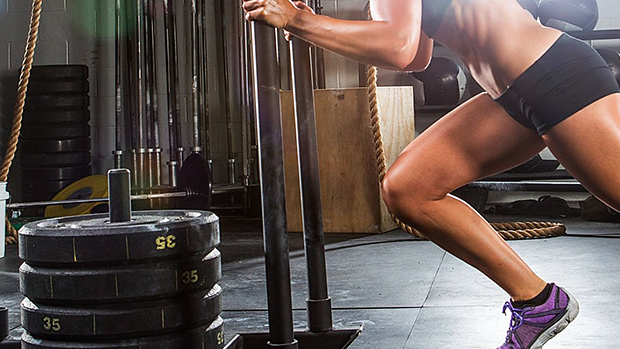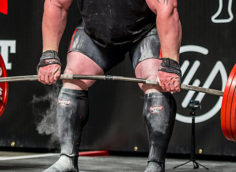Roll For Abs
One of the best exercises to heavily stimulate the rectus abdominis (the "six pack" muscle) is the rollout.

During a rollout, this muscle must fire hard to prevent the pelvis from going into anterior tilt, which in turn causes the lumbar spine to hyperextend. The lack of adequate ab recruitment and strength is the culprit of the low back pain many people associate with this exercise.
Most are familiar with doing rollouts using a basic ab wheel, but rollouts can and should at times be done with a barbell. You can do three things with a barbell that you can't do with an ab wheel:
Using an empty bar allows you to work through slightly more range of motion than an ab wheel. The bar sits a little lower to the ground which means your body can fall flatter. This will also place the points of contact (the bar and your knees, or feet if you're doing them standing) further apart. The further the distance between these contact points, the harder your abs must work to keep your lumbo-pelvic region positioned correctly.
It may not seem like putting more weight on a bar would make it roll any differently, but it absolutely does. It makes all the muscles involved work harder to maintain positioning and tension as you start and stop the heavier rolling load. Which would be easier to push across a parking lot, a Prius or a fire truck?
Barbells allow you to train rollouts using slight modifications and unique variations. This can be helpful for training around injuries, to add intensity, or just to break up the monotony of rolling straight out and back.
Arm Width
Grip width can alter the emphasis of the working muscles. Using a wider grip will work the chest and shoulders to a higher degree, as the arms will end up in a less stable position at end range. The abs must work hardest with a narrower grip; it keeps the arms longer, which allows the bar to travel further away from the knees or feet at end range (more distance to bridge and maintain proper position.)
Single Arm
This is a very tough variation that can't be done using an ab wheel. With only one working arm, your body is forced to resist rotation. It's extremely challenging for the chest, shoulders, and lats. The length of the barbell also makes it difficult to keep the bar rolling straight, so it will build wrist strength (radial and ulnar deviation).
Press Outs
These are challenging because you're forced to maintain a neutral lumbo-pelvic position while remaining in the most intense position throughout the entire set. This keeps a lot of tension on the abs and requires good shoulder functionality.
Different types of specialty bars can be used to orient the wrists and shoulders to different positions. This may allow you to roll out with more wrist and/or shoulder comfort, or just to challenge the arms to hold stable in a different position.
Swiss Bar Rollout
A Swiss bar may allow you to get more range of motion overhead if you have beat-up shoulders. The ability to reach overhead is crucial here. Without good shoulder mobility, you'll need to compensate by sagging at the hips to get more range of motion.
Landmine Rollout
Doing rollouts with a landmine attachment is very unique because only one end of the bar will roll while the other end remains fixed in place. This makes the bar travel in an arc, and places a lot of stretch on your distal lats and obliques.
Pivoting Rollout
The movement here will feel similar to the landmine rollout. The primary difference is that there will be some effort required from one arm to keep one side fixed in place to pivot from.
Add some complexes to your training if you want great abs. Complexes are extremely metabolic, which support low bodyfat levels. You must also keep the midsection tight in order to safely complete any complex.
Double down on your abs by adding barbell rollouts into a complex:
Select a few exercises and perform them one after the another using the same bar, without putting it down. Add a barbell rollout to the end.





